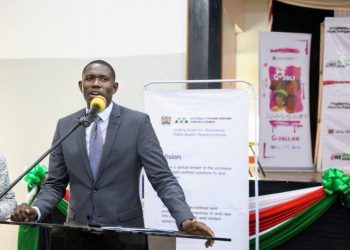By Nicole Lizzy
In the quiet hills of Kuria, Migori County, where culture and tradition intertwine like the woven kitenge fabrics women wear to ceremonies, the cries of girls often fade into the background muffled by custom, muted by fear, and dismissed by silence. But this silence is breaking.
Behind every whispered story of pain, there is now a voice—firm, brave, and determined. It is the voice of a new generation of girls who are refusing to bow to traditions that harm them. They are demanding health, dignity, and justice in a world that has too often denied them all three.
For many girls in Kuria, childhood ends too soon. Some wake to the sound of ululations, not of celebration, but of preparation for a ritual that will scar them for life Female Genital Mutilation (FGM). The procedure, still practiced secretly in parts of the region, is performed without anesthesia, hygiene, or consent.
“It happens early in the morning, before sunrise,” recalls Mary (not her real name), a 15-year-old survivor. “You are told to be strong, not to cry. But you feel everything. And afterward, they tell you, now you are a woman.”
FGM is deeply rooted in cultural beliefs that link womanhood to endurance, purity, and marital readiness. But behind these traditions lies a darker truth one of pain, lifelong health complications, and stolen dreams.
According to UNICEF, despite years of advocacy, FGM prevalence in Kuria remains one of the highest in Kenya. The ritual not only endangers girls’ physical health but also exposes them to infections, early pregnancies, and forced marriages that push them out of school.
For girls in Kuria, health is not a guarantee it is a gamble.
According to Florence Andesi most girls after undergoing FGM sometimes begin their period without knowing what it means. Some may bleed through their uniform in class, humiliated, with no access to pads or basic menstrual education. Many, unable to bear the stigma, eventually drop out of school.
This silence extends beyond menstruation. Sexual and reproductive health services remain out of reach for most girls, especially in rural areas. Clinics are understaffed, and cultural taboos discourage open dialogue about sex, contraception, or consent.
Despite the odds, the spirit of change is stirring in Kuria. Girls are learning, organizing, and leading often at great personal risk.
Local organizations such as Msichana Empowerment Kuria and Nyang’ori Girls Initiative are training adolescent girls as peer educators to speak up against harmful practices, promote menstrual hygiene, and advocate for girls’ rights.
“I want every girl to know her worth,” says 17-year-old Naomi Mongo, one of the young leaders in Kuria. “We are not just survivors we are leaders. We teach others to say no to FGM, to stay in school, to demand healthcare. We are changing our community, one girl at a time.”
In schools, teachers are incorporating discussions about reproductive health and gender equality. Health facilities are beginning to offer youth-friendly services, and boys are being engaged as allies in the fight to protect girls’ rights.
This year’s International Day of the Girl Child, themed “The Girl I Am. The Change I Lead. Girls on the Frontline of Crisis,” resonates deeply in Kuria a place where every girl’s fight for health and dignity is a battle for survival.
But as girls take the lead, the question remains: will society stand with them?
Experts and activists are calling for more investment in adolescent health programs, the enforcement of anti-FGM laws, and the establishment of safe spaces where girls can access accurate information, menstrual products, mental health support, and justice.
In Kuria, hope is growing quietly, courageously. The girls once silenced by fear are now leading community dialogues, reporting cases of abuse, mentoring their peers, and inspiring others to rise.
“The girl I am is not broken,” Naomi declares. “The change I lead is unstoppable.”
As the world marks the International Day of the Girl Child, Kuria’s daughters remind us that the fight for equality and justice is far from over but it is alive.
Because in Kuria, the frontline of crisis is also the frontline of change—and at its heart stands the girl who refuses to fall.












